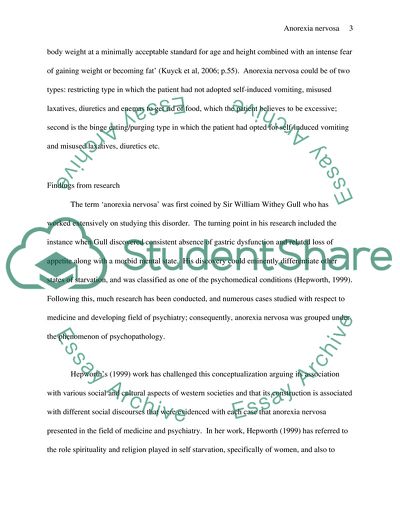Cite this document
(Treatment of Anorexia Nervosa Coursework Example | Topics and Well Written Essays - 2750 words, n.d.)
Treatment of Anorexia Nervosa Coursework Example | Topics and Well Written Essays - 2750 words. Retrieved from https://studentshare.org/health-sciences-medicine/1738947-important-aspects-of-assessment-and-treatment-in-anorexia-nervosa
Treatment of Anorexia Nervosa Coursework Example | Topics and Well Written Essays - 2750 words. Retrieved from https://studentshare.org/health-sciences-medicine/1738947-important-aspects-of-assessment-and-treatment-in-anorexia-nervosa
(Treatment of Anorexia Nervosa Coursework Example | Topics and Well Written Essays - 2750 Words)
Treatment of Anorexia Nervosa Coursework Example | Topics and Well Written Essays - 2750 Words. https://studentshare.org/health-sciences-medicine/1738947-important-aspects-of-assessment-and-treatment-in-anorexia-nervosa.
Treatment of Anorexia Nervosa Coursework Example | Topics and Well Written Essays - 2750 Words. https://studentshare.org/health-sciences-medicine/1738947-important-aspects-of-assessment-and-treatment-in-anorexia-nervosa.
“Treatment of Anorexia Nervosa Coursework Example | Topics and Well Written Essays - 2750 Words”, n.d. https://studentshare.org/health-sciences-medicine/1738947-important-aspects-of-assessment-and-treatment-in-anorexia-nervosa.


